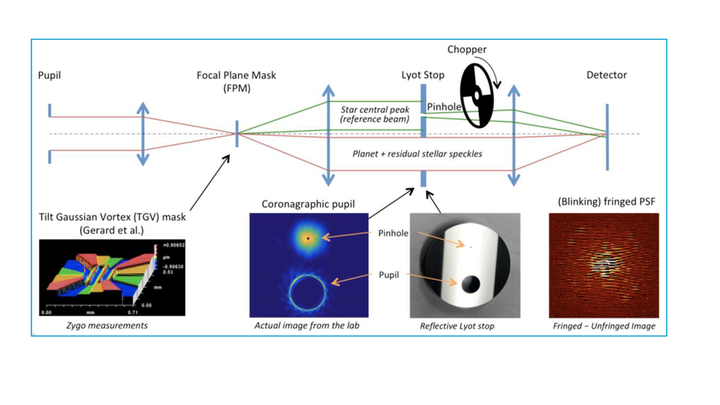Optical design and preliminary results of NEW EARTH, first Canadian high-contrast imaging laboratory test bench

Abstract
The NEW EARTH Laboratory (NRC Extreme Wavefront control for Exoplanet Adaptive optics Research Topics at Herzberg) has recently been completed at NRC in Victoria. NEW EARTH is the first Canadian test-bed dedicated to high-contrast imaging. The bench optical design allows a wide range of applications that could require turbulent phase screens, segmented pupils, or custom coronagraphic masks. Super-polished off-axis parabolas are implemented to minimize optical aberrations, in addition to a 468-actuator ALPAO deformable mirror and a Shack Hartmann WFS. The laboratory’s immediate goal is to validate the Fast Atmospheric Self-coherent camera Technique (FAST). The first results of this technique obtained in the NEW EARTH laboratory with a Tilt-Gaussian-Vortex focal plane mask, a reflective Lyot stop and Coherent Differential Imaging are encouraging. Future work will be aimed at expanding this technique to broader wavebands in the context of extremely large telescopes and at visible bands for space-based observatories.
Citation
@inproceedings{lardiere2020optical,
title={Optical design and preliminary results of NEW EARTH, first Canadian high-contrast imaging laboratory test bench},
author={Lardi{\`e}re, Olivier and Gerard, Benjamin and Thompson, William and Marois, Christian and V{\'e}ran, Jean-Pierre and Blain, C{\'e}lia and Heidrich, Wolfgang and Fu, Qiang},
booktitle={Adaptive Optics Systems VII},
volume={11448},
pages={114486Y},
year={2020},
organization={International Society for Optics and Photonics}
}
All images are © SPIE, reproduced here by permission of SPIE for your personal use. Not for redistribution.